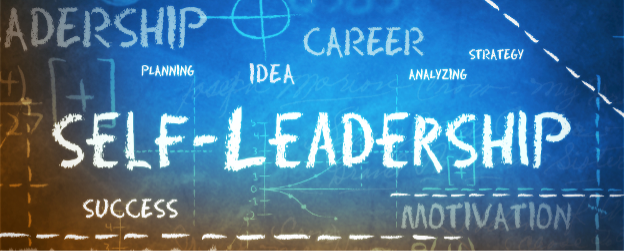Leadership Starts with Self-Leadership: The Foundation of Great Leadership

Leadership is one of the most powerful forces in any organization, team, or community. A great leader can inspire change, drive success, and bring out the best in others—while a poor leader can create confusion, frustration, and stagnation.
But what makes a great leader? Is it a title? Experience? A strong personality?
The truth is, leadership isn’t just about managing others—it starts with managing yourself. That’s why we’re dedicating the month of March to Leadership, exploring four key aspects of what makes an effective leader:
- Week 1: Leadership Starts with Self-Leadership (Before you can lead others, you must lead yourself.)
- Week 2: Leading with Influence, Not Authority (How to inspire and lead without relying on formal power.)
- Week 3: Balancing Accountability and Empathy as a Leader (How to set high standards while supporting your team.)
- Week 4: How to Develop Future Leaders: Mentoring & Coaching Your Team (Great leaders create more leaders, not just followers.)
This week, we’re starting at the foundation—self-leadership. Because if you can’t lead yourself, how can you expect to lead others?
What is Self-Leadership (And Why It’s the Key to Great Leadership)?
Leadership is often viewed as influencing and managing others, but true leadership begins with the ability to influence and manage yourself.
Self-leadership is about taking responsibility for your own growth, decisions, and actions—without needing external motivation. It means setting a personal standard of excellence, staying disciplined in your approach, and continuously improving yourself. Leaders who master self-leadership are more effective, more respected, and more resilient in the face of challenges.

Think about the leaders you admire most. What sets them apart? Chances are, they are self-disciplined, accountable, and proactive in their growth. They don’t wait for someone else to push them forward; they take responsibility for their own success.
Without self-leadership, even the most skilled or charismatic leaders will eventually struggle to earn trust and respect.
The Four Pillars of Self-Leadership
To become a great leader, you must develop four key self-leadership traits. These qualities not only shape your leadership effectiveness but also set the standard for those you lead.
1️⃣ Self-Awareness: Know Yourself Before Leading Others
Self-aware leaders understand their strengths, weaknesses, and values. They recognize how their emotions and behaviors impact those around them and are willing to adapt and grow.

Take Warren Buffett, for example. Buffett is not just known for his investment genius but also for his deep self-awareness. He understands his own decision-making tendencies and emotional triggers. He famously avoids making rash decisions and instead practices patience, reflection, and self-control, which have been key to his long-term success.
🔹 How to Build It:
- Take time for reflection: Ask yourself, How do my actions impact others?
- Seek honest feedback from trusted colleagues and mentors.
- Identify your stress triggers and emotional responses, and develop strategies to manage them.
2️⃣ Self-Discipline: Stay Focused on What Matters Most
Discipline is the ability to stay committed to long-term goals, even when distractions and challenges arise. A disciplined leader follows through on commitments, models consistency, and sets an example for their team.

Consider Angela Merkel, Germany’s former Chancellor. She was known for her steady, disciplined leadership, always taking a thoughtful and calculated approach to decisions. Even in crises, she remained calm, focused on facts, and avoided emotional reactions. Her discipline and methodical nature earned her the reputation of being a stable and trusted leader in uncertain times.
🔹 How to Build It:
- Develop a routine that prioritizes high-value tasks over distractions.
- Set personal goals and track your progress consistently.
- Avoid procrastination by using time management strategies like the 4 D’s or the 3-3-3 Method (which we covered in February!).
3️⃣ Personal Accountability: Own Your Decisions & Actions
The best leaders take full responsibility for their choices, actions, and outcomes. They don’t blame others or make excuses—they own both their successes and failures.

A great example of personal accountability is Howard Schultz, former CEO of Starbucks. In 2008, Starbucks was struggling, and instead of blaming external factors or past leadership, Schultz took full responsibility for the company’s decline. He publicly acknowledged mistakes, focused on fixing core problems, and led the company through a major turnaround. His willingness to take ownership and act decisively is what helped Starbucks regain its footing.
🔹 How to Build It:
- When mistakes happen, focus on solutions, not excuses.
- Ask yourself: Am I blaming external circumstances, or am I owning my results?
- Set the standard for your team—if you expect accountability, model it yourself.
4️⃣ Continuous Growth: Never Stop Learning & Improving
Great leaders are always learning, evolving, and improving. They seek out knowledge, feedback, and experiences that make them better every day.

A perfect example of continuous growth is Bill Gates. Even after building Microsoft into a tech empire, Gates never stopped learning. He reads extensively, seeks out new ideas, and constantly challenges his own thinking. His ability to embrace lifelong learning has kept him at the forefront of innovation and leadership.
🔹 How to Build It:
- Commit to lifelong learning—read, listen to podcasts, take courses.
- Surround yourself with mentors and peers who challenge and inspire you.
- Stay open to feedback—great leaders ask, "How can I do better?"
How to Strengthen Your Self-Leadership
Now that we’ve covered the four pillars, here are some practical steps you can take today:
1️⃣ Set clear goals for your personal and professional growth.
2️⃣ Create a daily or weekly leadership habit (e.g., morning reflection, journaling, or goal-setting).
3️⃣ Track your progress—self-leadership isn’t a one-time decision; it’s a daily commitment.
4️⃣ Regularly assess where you are and adjust as needed.
To help with this, I’ve created a Self-Leadership Reflection Guide—a structured tool to help you assess your leadership strengths and set action steps for growth.
Download the Free Tool: Self-Leadership Reflection Guide
Want to take your self-leadership to the next level?
📥 Download the Self-Leadership Reflection Guide to:
- Assess your current strengths and weaknesses as a leader.
- Identify key areas for personal growth.
- Create an action plan to improve your leadership impact.
Final Thoughts: Leading Yourself Before Leading Others
The greatest leaders don’t just focus on managing others—they focus on leading themselves first.
🔹 If you want to build trust, credibility, and influence, start by mastering self-leadership.
🔹 Take responsibility for your actions, continuously learn, and model the discipline and accountability you expect from others.
🔹 Because when you lead yourself well, you naturally inspire and lead others more effectively.
📥 Don’t forget to grab your free guide and start strengthening your self-leadership today!